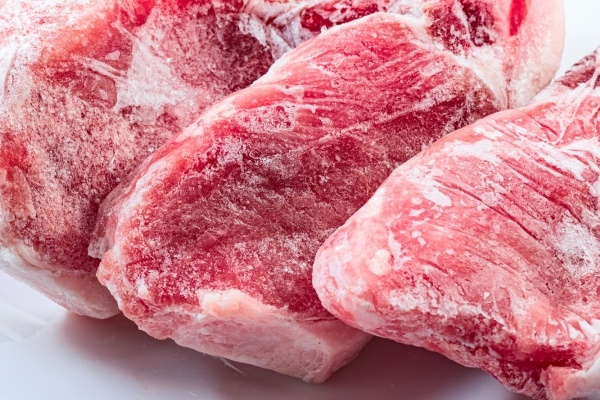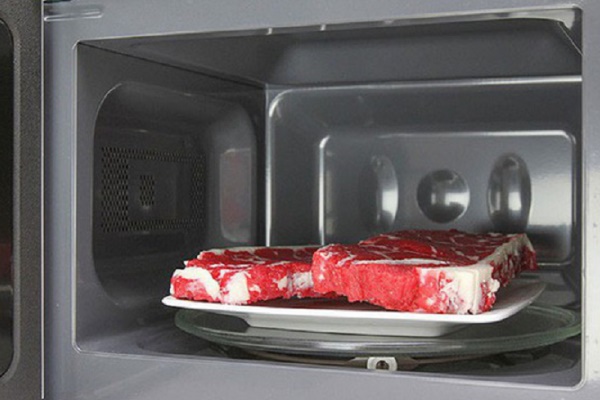With the tips below, the thawing time of meat will be significantly reduced, while still ensuring the food remains fresh after thawing.
Tips for thawing meat with salt and vinegar
Vinegar and salt are two ingredients that every family has readily available and easy to apply when necessary.
The process is as follows:
First, prepare a small bowl of water, then add a spoonful of salt and a little vinegar. Stir well to completely dissolve the salt and vinegar. Now, place the piece of meat that needs to be thawed. Do not put the meat in right away, as it will make the meat taste bland. Wait for the salt and vinegar to dissolve, then add the meat to keep it fresh and sweet after cooking. After about 5-7 minutes, the meat will be thawed and still tender and delicious.

Meat thawing tip with salt and vinegar
Tips for thawing meat with sugar
Sugar not only helps thaw meat quickly, but also keeps the meat tender and retains its delicious taste when cooked.
The process is as follows:
Mix cold water and boiling water in a ratio of 5:1 to create a warm water mixture of about 40 degrees. Add about 2 spoons of sugar to the mixture and stir well to dissolve. Put the frozen meat into the mixture. In just 7 minutes, the meat will become tender.
Tips for thawing meat with ginger
Similar to thawing with sugar, to thaw with ginger, you need to prepare the following:
A basin of warm water at 40°C, add a few thin slices of ginger and stir well. Soak the frozen meat in it until completely thawed. The heat from ginger helps the meat thaw quickly, and also helps the meat retain its freshness, color, and natural flavor after thawing.
Thawing at room temperature
Thawing naturally is the simplest method, but it will take a lot of time to process if you are not prepared in advance.
To prepare for a meal, take the portion of preserved frozen meat in a vacuum bag and keep it clean. Then, leave it at room temperature before going to work or doing other personal tasks. When you return, you will easily have perfectly thawed, fresh and almost… saving a lot of time.
Thawing food with a microwave
In case you need to thaw quickly, you can use a microwave to heat and thaw the food. Note when thawing, discard packaging materials that are not safe for the microwave, such as foam boxes, plastic bags, cardboard, place food in a deep box or dish with a lid or microwave-safe wrap, and avoid water from the food flowing out.

Quick and effective food thawing with a microwave
Thawing with a microwave is quite effective because the high-frequency electric field will generate friction within the food itself, making the food heat up and thaw but not break the cells.
One important point to note when thawing with a microwave is the time and temperature. If the temperature is too low, the food will thaw slowly, creating conditions for bacteria to grow. And if the temperature is too high, the outer layer of the food will be cooked while the inside is still frozen. Therefore, it is important to set the correct time and amount of food to choose the appropriate temperature.
With this method, the food needs to be cooked immediately as the meat may have started to cook. In addition to meat, frozen fish can be grilled or baked in the microwave without the need to thaw.
The process is as follows:
Place the meat in the microwave on a low setting for 2 minutes.
The frozen piece of meat can be thawed, and it is very quick and easy, taking less than 5 minutes. This is a simple and popular method among many people and in restaurants.
Source: VTC
Preparing Yellow Apricot Flowers to be in Full Bloom for Tet Celebration
As the Lunar New Year quickly approaches, many families are looking for guidance when it comes to selecting, purchasing, maintaining, and decorating with beautiful golden apricots. To ensure you get the most out of this lovely tradition, this article will provide you with specific instructions for choosing, caring for and decorating with yellow apricot blossoms. Learn how to make the most of this iconic symbol of the Tet holiday season!





































